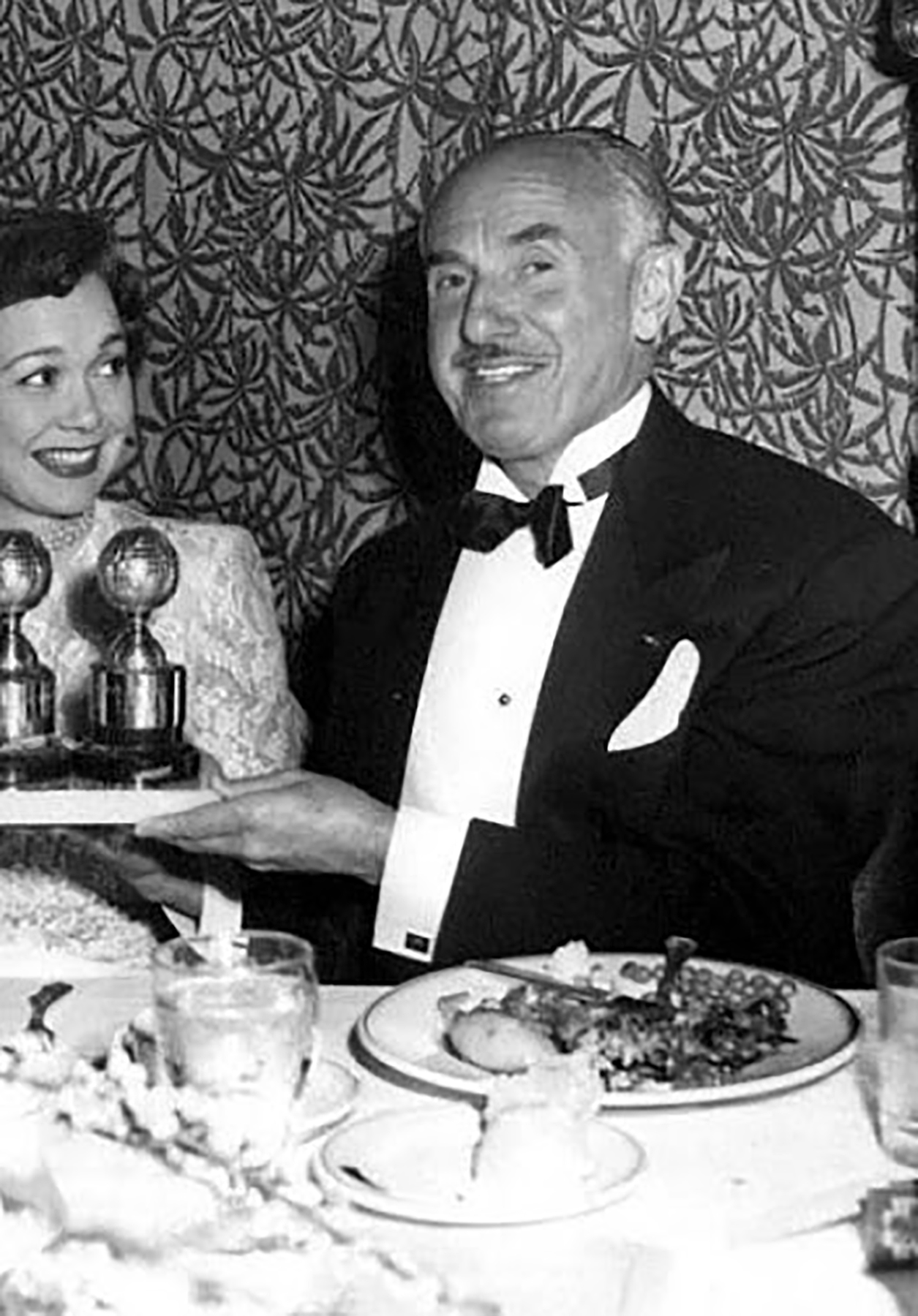
- Cecil B. DeMille
Ready for My deMille: Profiles in Excellence – Jack L. Warner, 1956
"Arial",sans-serif;color:#550016″> was presented to its namesake visionary director, the Hollywood Foreign Press Association has awarded its most prestigious prize 66 times. From Walt Disney to Bette Davis, Elizabeth Taylor to Steven Spielberg and 62 others, the deMille has gone to luminaries – actors, directors, producers – who have left an indelible mark on Hollywood. Sometimes mistaken with a career achievement award, per HFPA statute, the deMille is more precisely bestowed for “outstanding contributions to the world of entertainment”. In this series, HFPA cognoscente and former president Philip Berk profiles deMille laureates through the years.
Jack Warner relished his title of “Jack. L Warner in charge of production,” and was a force in Hollywood for forty years. That title graced every Warner Brothers film for 40 of those years and even though he shared ownership with his three brothers, he is the one who steered the industry’s first talking picture, The Jazz Singer, which of course revolutionized the industry,
Hal B. Wallis, who as a result departed the studio. And even though Wallis had a successful run at Paramount he never achieved the greatness he had when Jack was in charge of production.
Darryl F. Zanuck to write for Rin Tin Tin, he soon became Jack’s right-hand man and executive producer.
Bette Davis, Edward G. Robinson, John Garfield, and Humphrey Bogart, who have all stood the test of time.
Mickey Rooney.
Frank Capra’s Meet John Doe, Sergeant York*, The Maltese Falcon*, and One Foot in Heaven*, the latter three all Best Picture Oscar nominees that year.
Ronald Reagan. Bette Davis also had one of her best roles in Now Voyager and Yankee Doodle Dandy* gave Cagney his greatest role. But the year was capped by Casablanca, which won the Best Picture Oscar and is arguably one of the five greatest films of all time. Sadly, it also spelled the end of the Hal Wallis era. The studio felt his loss the next year and only Watch on the Rhine* stood out among its releases, which was far less in number than in previous years.
Jerry Wald and Henry Blanke) finally hit their stride in 1945 with Rhapsody in Blue and Mildred Pierce*, the latter Oscar-nominated as Best Picture, made Joan Crawford the new queen of the lot.
Life with Father, the umpteenth Michael Curtiz directed hit. No one made more money for the studio than Curtiz. Finally, in 1947 the studio had their best artistic year since Casablanca, which started with The Treasure of the Sierra Madre* and ended with Johnny Belinda*, both Golden Globe nominees. It was Jack’s night at the Golden Globes when he accepted the Best Picture award for both movies.
East of Eden* in 1956 (Golden Globe Best Motion Picture Drama winner) and Rebel Without a Cause in 1957, A Face in the Crowd, The Pajama Game, and The Prince and the Showgirl in 1957, Auntie Mame* (Golden Globe Best Musical or Comedy winner) in 1958, Rio Bravo, and The Nun’s Story* (Best Motion Picture Drama Golden Globe) in 1959. But leading the pack were three all-time classics: Kazan’s A Streetcar Named Desire*, George Stevens’ Giant*, and George Cukor’s A Star is Born*.
My Fair Lady*, which he personally produced and which rightfully won both the Oscar and Golden Globe as Best Picture. He also championed the groundbreaking Who’s Afraid of Virginia Woolf*, less enthusiastically Warren Beatty’s game-changer Bonnie and Clyde, and finally his last hurrah, 1776, which he made for Columbia when Warner’s passed on it.

